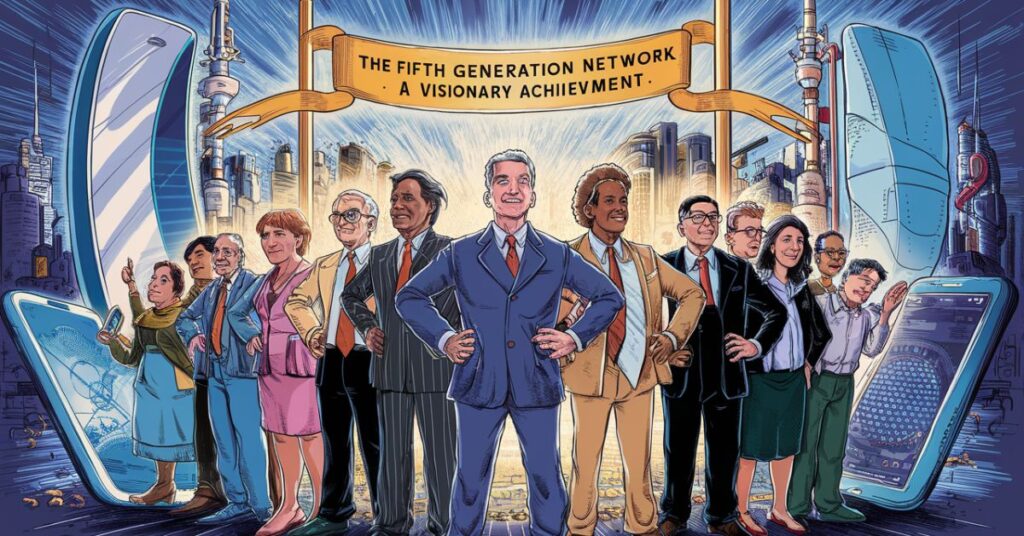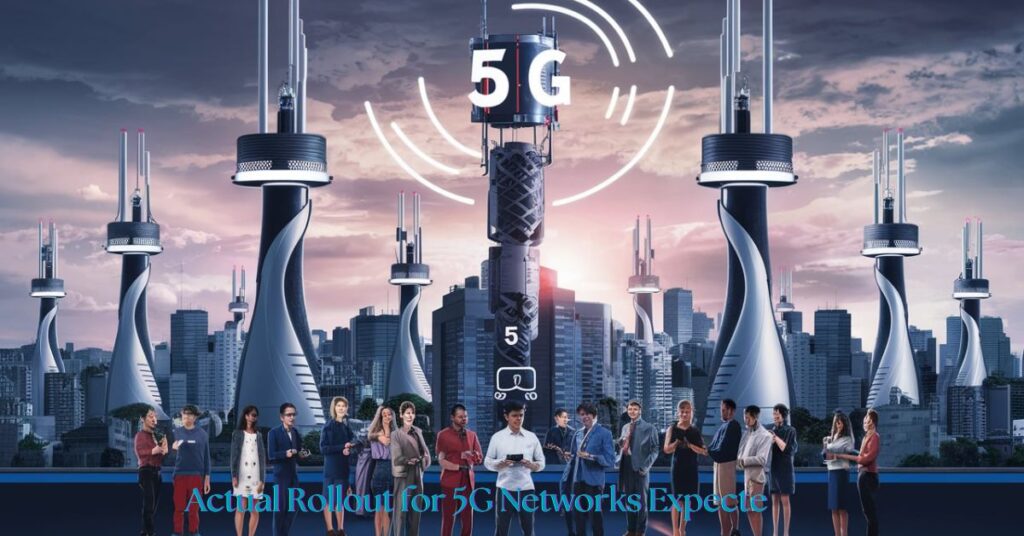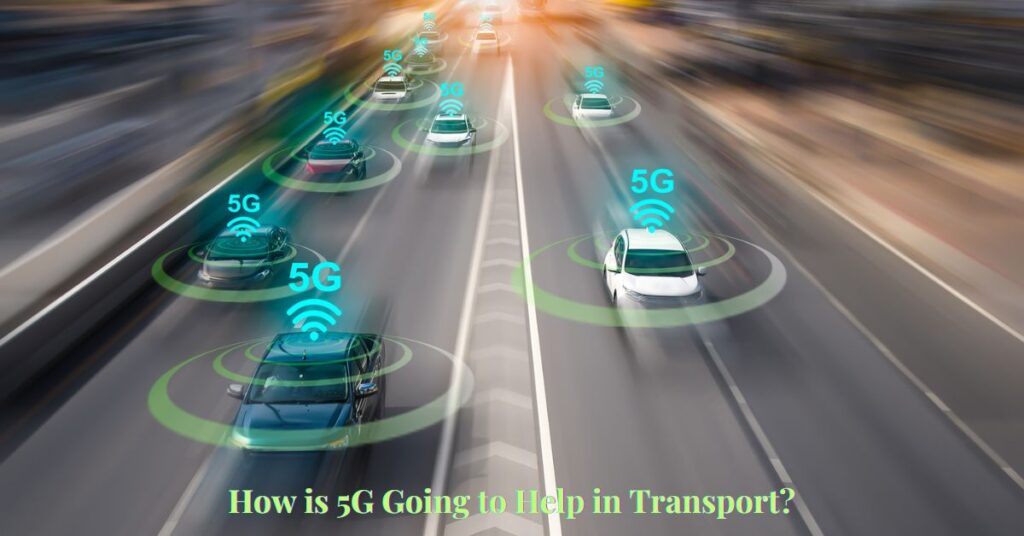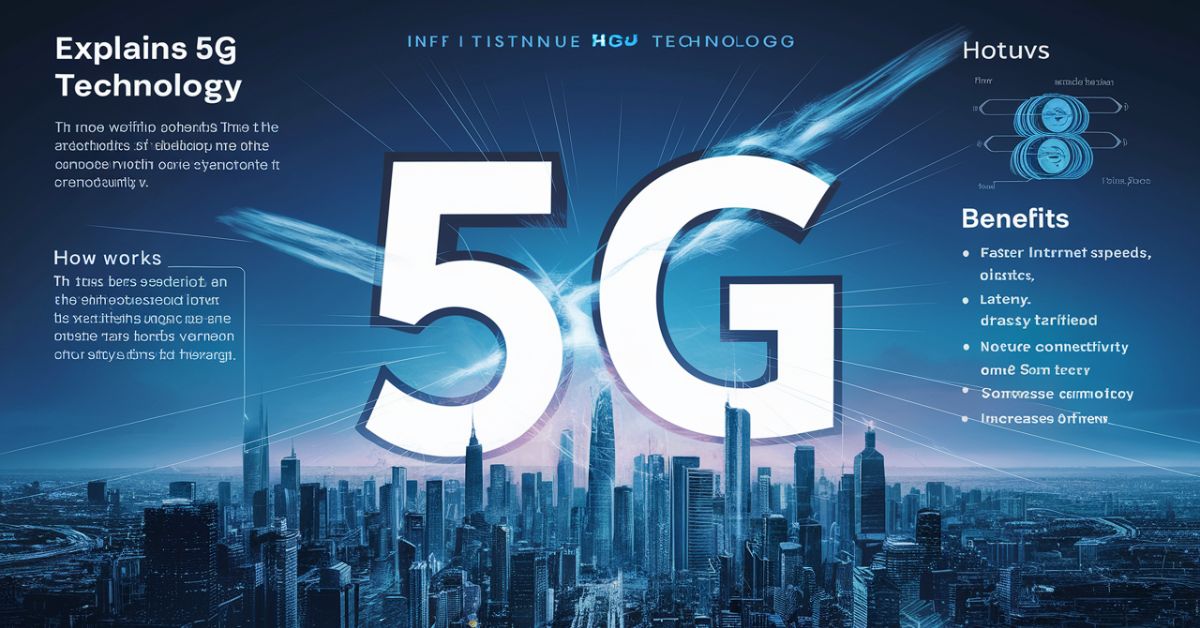5G is the fifth mobile generation. It follows 1G, 2G, 3G, and 4G. 5G connects people and devices. It offers high data speeds. It has ultra-low latency.
5G provides massive network capacity. It ensures reliable connections. It enhances user experience. It drives new industry applications. Higher efficiency is a key feature.
How Does 5G Work?
5G uses higher radio frequencies. This boosts data speed and capacity. Millimeter waves handle more information. They were unused but now accessible. Regulators opened them for licensing. Higher bands face distance issues. Objects can block these signals.
Multiple antennas boost 5G coverage. Smaller transmitters aid signal distribution. They are placed on buildings and furniture. 5G can support more devices. It slices networks into virtual parts.
Operators manage network slices efficiently. Businesses can rent isolated slices. This prevents competition for network traffic. Autonomous vehicles need complex slices.
Who Invented the Fifth Generation Network?
South Korea adopted 5G in 2019. It had 224 operators in 88 countries. South Korea used Samsung, Ericsson, Nokia equipment. One carrier used Huawei’s equipment. Samsung shipped the basest stations.
There are nine 5G hardware sellers. Altiostar and Cisco Systems are included. Datang Telecom provides 5G systems. Ericsson and Huawei are key players. Nokia, Qualcomm, Samsung, ZTE are involved.

- South Korea leads in 5G adoption: South Korea was the first country to adopt 5G on a large scale in April 2019.
- Major 5G equipment providers: Samsung, Ericsson, Nokia, and Huawei supply 5G equipment, with Samsung being the largest supplier in South Korea.
- Global investment in 5G: By 2019, 224 operators in 88 countries were investing in 5G technology.
- Multiple 5G hardware vendors: Nine companies, including Altiostar, Cisco, and Datang, sell 5G radio hardware.
- Diverse equipment uses: South Korean carriers used various suppliers for their 5G networks, showing a diverse equipment market.
READ THIS BLOG: Family Game Night Ideas For all Ages
How Much Faster is 5G Compared to 4G and 3G?
5G can reach 10 Gbps speeds. It’s 100 times faster than 4G. It outpaces advanced LTE-A standards. Even conservative estimates surpass 3G and 4G. 5G offers significant speed improvements.
3G averages 8 Mbps download speeds. 4G averages 32.5 Mbps speeds. 4G+ peaks at 300 Mbps. 5G averages 130-240 Mbps. Its theoretical max is 10 Gbps. 5G downloads HD films quickly.
| Technology | Average Download Speed | Maximum Download Speed | Example Download Time for HD Film |
|---|---|---|---|
| 3G | 8 Mbps | 384 Kbps | Over a day |
| 4G | 32.5 Mbps | 100 Mbps | Over 7 minutes |
| 4G+ | 42 Mbps | 300 Mbps | Faster than 4G |
| 5G | 130-240 Mbps | 1-10 Gbps | 4 to 40 seconds |
Will 5G Replace 4G? When?
5G won’t replace 4G soon. 4G may last for decades. Rural areas will keep 4G longer. Deployment costs are higher in rural areas. Low latency is less important there. 4G remains essential in many regions. 5G is costly to implement.
Rural areas prioritize cost over speed. 4G infrastructure already in place. Gradual transition expected over time. 5G won’t replace 4G immediately.
4G will persist for decades. Rural deployment is costly. Low latency isn’t crucial there. 4G infrastructure already exists. Transition will be gradual.
When is the Actual Rollout for 5G Networks Expected?
5G uses existing 4G networks. Busy areas get 5G first. UK’s 5G rollout spans 26 cities. From 2019 to late 2020. Major UK cities prioritized. Infrastructure upgrades support the rollout.
London gets 5G early on. Birmingham and Manchester follow. Edinburgh prepares for 5G next. Cardiff and Belfast join rollouts. Initial focus on high-traffic areas. Infrastructure supports gradual expansion.

- London: First UK city for 5G.
- Birmingham: Early adopter in 2019.
- Manchester: High-traffic area gets 5G.
- Edinburgh: Prepares for 5G in 2020.
- Cardiff: Included in initial rollout.
- Belfast: Part of early deployment.
Will 5G Technology Mean Buying New Equipment?
Upgrading to a 5G phone needed. Few 5G phones are available now. Examples are LG V50 THINQ and Xiaomi Mi Mix 3. More 5G phones are coming soon. No hurry to upgrade immediately.
New models will reach the market. Full 5G rollout will take time. Existing phones work for now. Wait for more 5G options. Upgrading is not urgent yet.
Is the World Ready for 5G?
5G is rolling out in the US. South Korea has limited 5G coverage. UK 5G is in early stages. Expansion will continue through 2020. More places will get 5G soon.

Global 5G readiness is progressing. Current coverage is still limited. Efforts to expand are ongoing. World not fully ready for 5G. Steps taken to spread technology.
How will 5G Change Everything?
5G transforms products and services. Performance boost for mobile technology. Fixed wireless access rivals’ broadband. Improves connectivity in remote areas. Enables remote health monitoring applications. Remote control technology trials successful.
AI and holographic tech benefit from 5G. First 5G TV is being tested. Enhanced coverage at events like festivals. Revolutionizes transport with connected cars.
5G transforms various industries significantly. Boosts performance for mobile tech. Rivals fibre broadband with fixed wireless. Connects hard-to-reach areas efficiently.
Enables remote health monitoring applications. Supports remote control technologies. AI and holograms advance with 5G. First 5G TV is in trials. Enhanced coverage for events and festivals. Transport and autonomous cars benefit.
READ THIS BLOG: Investigating the Potential of the Plugboxlinux Gaming Platform
How will 5G Shape Future Technology?
5G is faster and more reliable. Download movies in seconds. Stream 4K films without buffering. Enhances virtual and augmented reality. Advanced processing handled remotely. Greater capacity for IoT devices.
Connects refrigerators, lights, cars. Improves smart device functionality. Enables new markets like autonomous vehicles. Autonomous vehicles benefit from reduced latency. Remote surgery possible with 5G. Doctors control robots from afar.
Transforming industry with real-time monitoring. Control of robots, drones, factories improve. Enhanced connectivity for various technologies. Enables real-time remote operations.
How is 5G Going to Help in Transport?
IoT and 5G revolutionize transport. Aerospace sees better data sharing. Improved safety and maintenance operations. Near real-time data processing efficiency. Better in-flight entertainment and WiFi.
5G changes automotive with connected cars. Internet access and wireless LANs. Advanced driver assistance systems enhance driving. Real-time communication between vehicle systems. Data used for vehicle maintenance. Predictive maintenance and fleet management improve.

Vehicle-to-vehicle communication enables safer driving. Sharing speed and location information. Vehicles connect to road infrastructure. Traffic lights react to traffic flow. Roads in need of repair identified. Fully autonomous vehicles become possible.
Real-time data exchange reduces congestion. Monitors traffic flow and raises alerts. Autonomous transport becomes a reality.
- Aerospace: Improved data sharing enhances safety.
- Automotive: Connected cars enable real-time communication.
- In-flight: Better WiFi and entertainment for passengers.
- Road Transport: Vehicle communication for safer driving.
- Infrastructure: Monitors traffic, identifies road repairs.
What are the advantages and disadvantages of using 5G?
5G provides significantly faster speeds. Lower latency enhances real-time applications. Increased bandwidth supports many devices. Potential for new technologies arises. Coverage is currently limited. Connectivity range is restricted.
Cybersecurity risks need addressing. Slow rollout delays widespread adoption. Benefits include faster speeds and low latency. Increased bandwidth supports many devices. Enables potential for new technologies.
5G offers faster speeds than 4G. Lower latency improves real-time applications. Increased bandwidth supports more devices. Enables potential for new technologies. However, limited coverage remains an issue. Connectivity range is restricted.
Cybersecurity risks need addressing. Slow rollout delays widespread adoption. Despite challenges, 5G holds great potential.
- Faster Speed: 5G provides significantly faster speeds.
- Lower Latency: Enhances real-time applications with lower delay.
- Increased Bandwidth: Supports a higher number of devices.
- New Technology Potential: Enables innovations like autonomous vehicles.
Frequently Asked Question
How does 5G technology work?
5G uses higher frequency radio waves, enabling faster data transmission and lower latency.
What are the benefits of 5G technology?
5G provides faster speeds, lower latency, increased bandwidth, and supports new technologies like IoT and autonomous vehicles.
Final Words
5G is the future of connectivity. It offers unprecedented speed and reliability. 5G will transform industries and daily life. The technology enables new applications. 5G’s impact will be widespread and profound. As the rollout continues, adoption will grow.
Businesses and consumers will benefit immensely. Enhanced performance will drive innovation. 5G is set to revolutionize technology. Future developments will further expand possibilities. 5G networks are rapidly expanding globally. They offer faster speeds than ever before.
Industries like healthcare see immediate benefits. Remote surgeries and monitoring become possible. Autonomous vehicles thrive with low latency. IoT devices will become even smarter. Real-time data processing will revolutionize many sectors.











